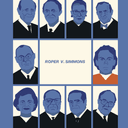The Journal Sentinel (Milwaukee, WI)
October 5, 2004
Editorial
In its term that began this week, the nation’s top court gets chances to make America fairer by outlawing the death penalty for crimes committed by 16- and 17-year-olds, amending federal sentencing practices that yield overly long prison stays, and barring the inspection of stopped cars by drug-sniffing dogs without reasonable suspicion of wrongdoing.
Meanwhile, court watchers would not be surprised if this term made big news in another way: the retirement of a justice. The aging Supreme Court has not changed personnel in more than 10 years — the longest such spell since the 1820s. This anticipated development underscores the importance of the current race for the White House, whose outcome could determine the next appointee to the court.
Two years ago, the court at last barred the particularly barbaric practice of executing mentally retarded defendants. In doing so, the court reversed an earlier ruling with the explanation that what constitutes “cruel and unusual punishment,” which the Constitution forbids, evolves. National and world standards had changed to the point where the execution of adults with the minds of children was now considered cruel and unusual, the court reasoned.
That same logic should apply for actual children. In 1988 the court barred the execution of people who were 15 at the time of their crimes, but the following year permitted the death penalty for 16- and 17-year-olds — a practice now at odds with world and even national standards. Most states, as well as the federal government, bar executions either altogether or just of minors. The court should align itself with those standards.
The justices have already heard arguments in the court’s most urgent case. In a case from Washington state last year, the court narrowly — and wisely — ruled that the right to a trial by jury means that juries, not judges, must find facts that increase penalties beyond the maximum. That ruling threw federal sentencing guidelines into disarray. Lower courts disagree as to whether the Washington ruling is relevant. The high court will clarify the situation — we hope in a way that will mollify what judges and lawyers alike have characterized as the excessive harshness of those guidelines.
The drug-sniffing case involves an Illinois traffic stop, in which the defendant explicitly declined to consent to a search. The court must protect individual liberty and not permit this example of a warrantless search.
The court will deal with federalism, civil rights, property rights and a host of other issues this term — in a manner that advances fairness and justice, we hope.
The lack of turnover means an aging court. At 56, Clarence Thomas is the court’s youngster. The other justices are at least 65, with John Paul Stevens leading the way at 84. Behind him are Chief Justice William Rehnquist, 80, and Sandra Day O’Connor, 74.
So there’s a good chance that filling a Supreme Court vacancy will fall in 2005 to the winner of the current race for the White House — a factor voters must weigh this November.
The Journal Sentinel (Milwaukee, WI)



